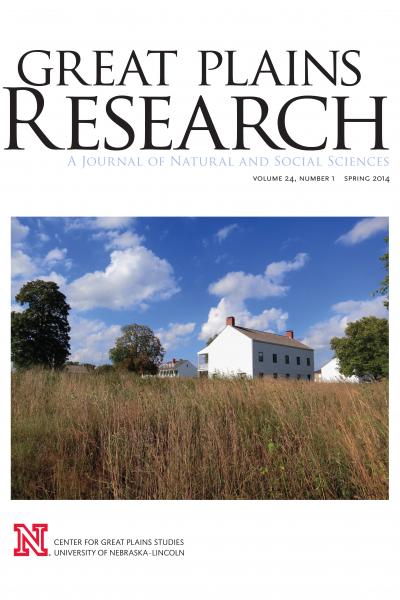
In baseball, on-field confrontations between coaches and umpires are just part of the game. Authors in the latest issue of Great Plains Research have explored this relationship by showing how the same dynamics of social power and influence are also in play between supervisors and subordinates in the every-day workplace.
The Spring issue, produced by the University of Nebraska's Center for Great Plains Studies, publishes both social and natural science articles. For the first time, the issue is available through university library subscriptions to Project MUSE. Some of the articles in the issue:
Kevin Warneke and Dave Ogden explore the sometimes contentious relationship between baseball managers and umpires by showing how these same dynamics are at play in the workplace in "Screamers, Whiners, and Drive-Bys: How Umpires View Baseball Coaches' Attempts to Influence their Calls."
When it comes to the decline of population in the Great Plains, gender is a key component in the migration patterns of young people as shown in Robert Shepard's "The Role of Gender in Rural Population Decline in Kansas and Nebraska, 1990-2010."
The popularity of place-based antiques tourism takes center stage in H. Jason Combs and Paul R. Burger's examination of Nebraska's annual Junk Jaunt in "Junk Jaunt Geography: Buying and Selling America's Cultural Past in Central Nebraska."
In a disturbing trend, many native stream fishes have declined due to anthropological disturbances in prairie streams as evidenced by the assessment done by Jonathan J. Spurgeon, Richard H. Stasiak, George R. Cunningham, Kevin L. Pope and Mark A. Pegg in "Status of Native Stream Fishes within Selected Protected Areas of the Niobrara River in Western Nebraska."
Craig Corpstein, Joseph Arruda, Cynthia Ford and Ananda Jayawardhana examine the current condition of the restored prairie at Fort Scott National Historic Site in Kansas and show how it has yet to fully regain the characteristics of the prairie once native to the region in "An Assessment of Prairie Restoration at Fort Scott National Historic Site."
A printed copy of Great Plains Research is available via the University of Nebraska Press as an individual copy or as a subscription. Visit http://www.unl.edu/plains for more information.
— Katie Nieland, Center for Great Plains Studies
More details at: http://go.unl.edu/2kgb